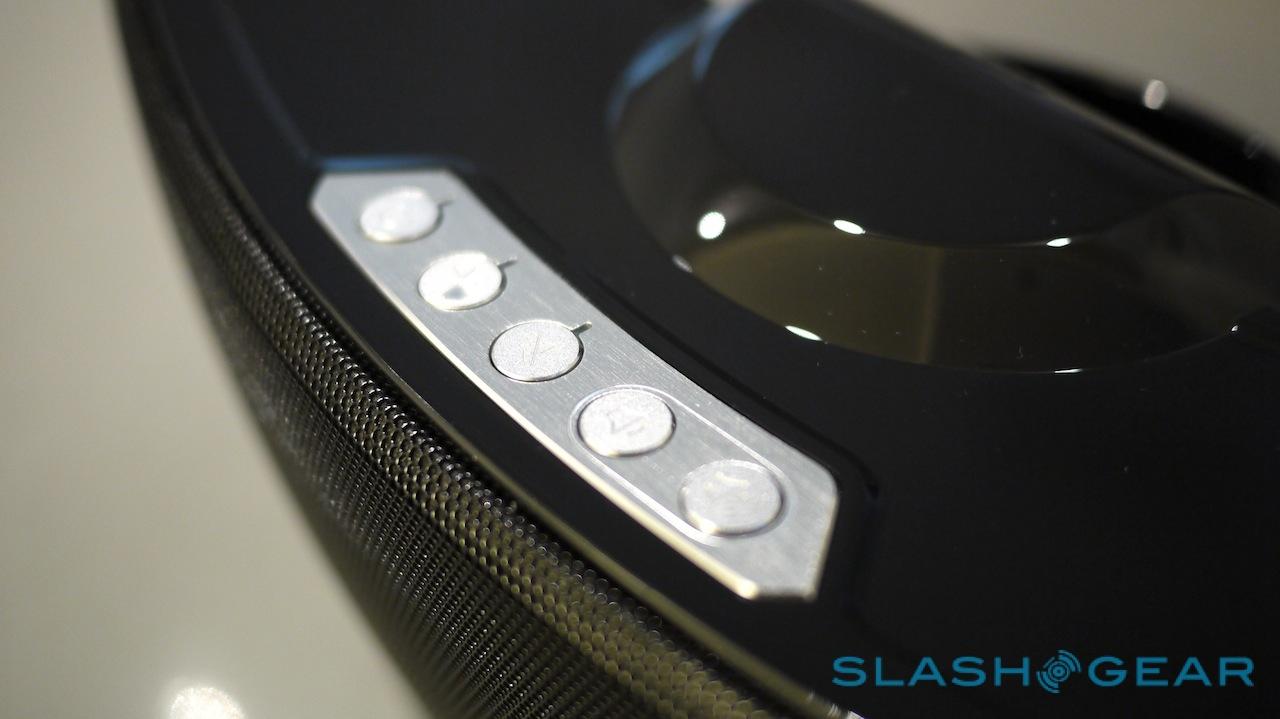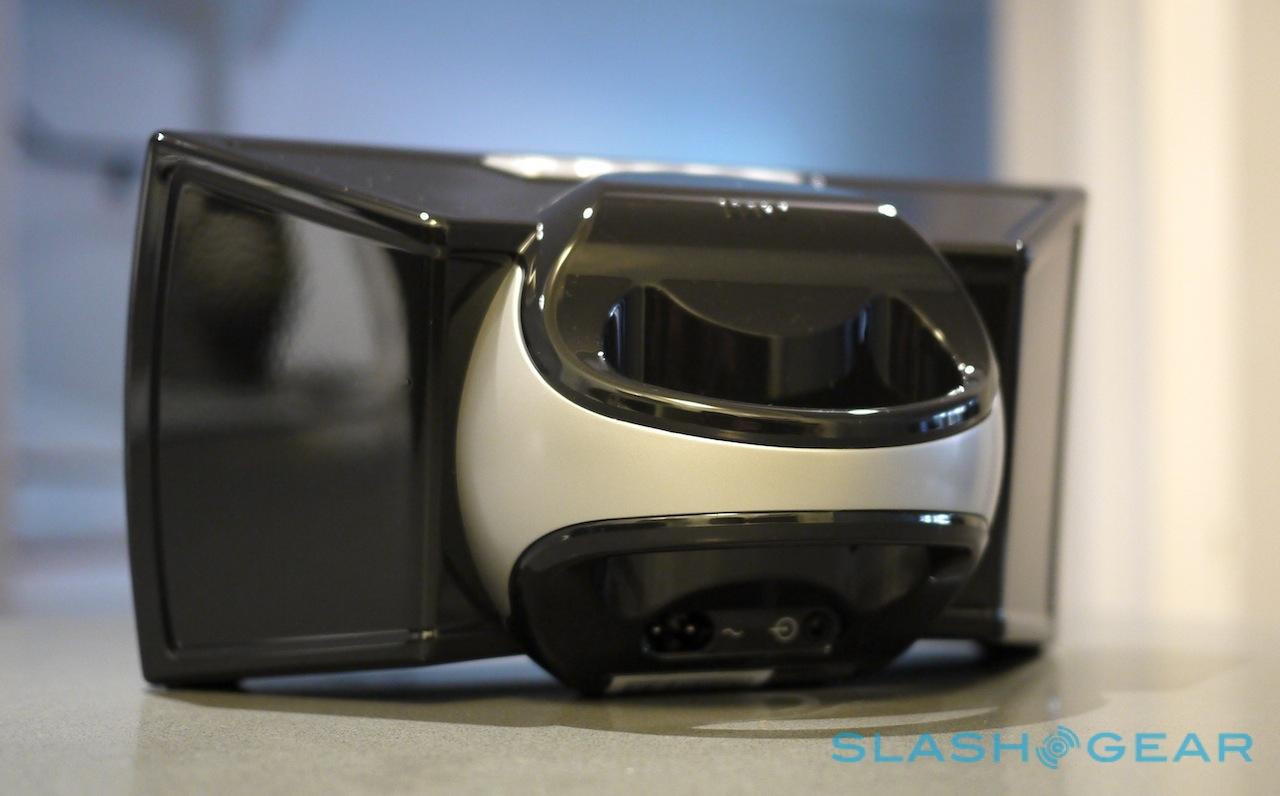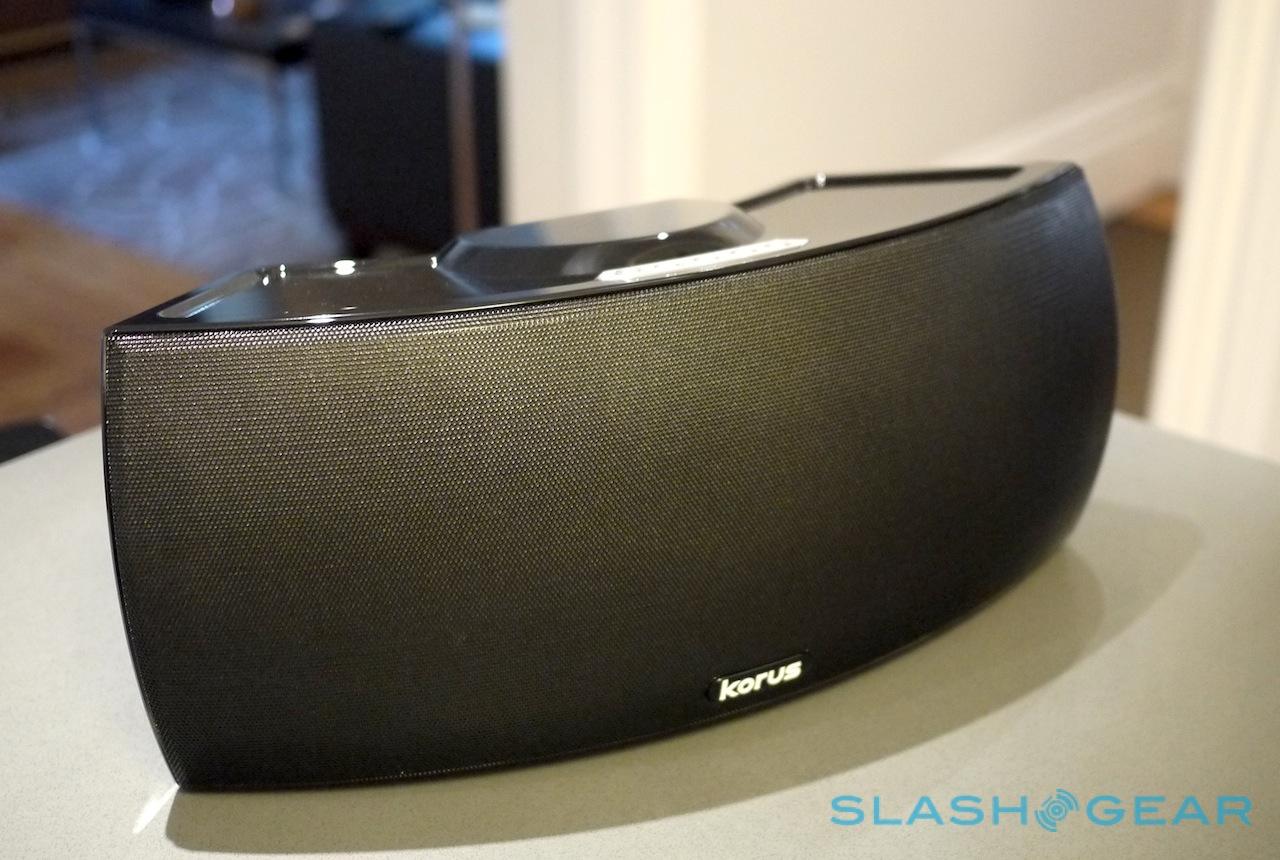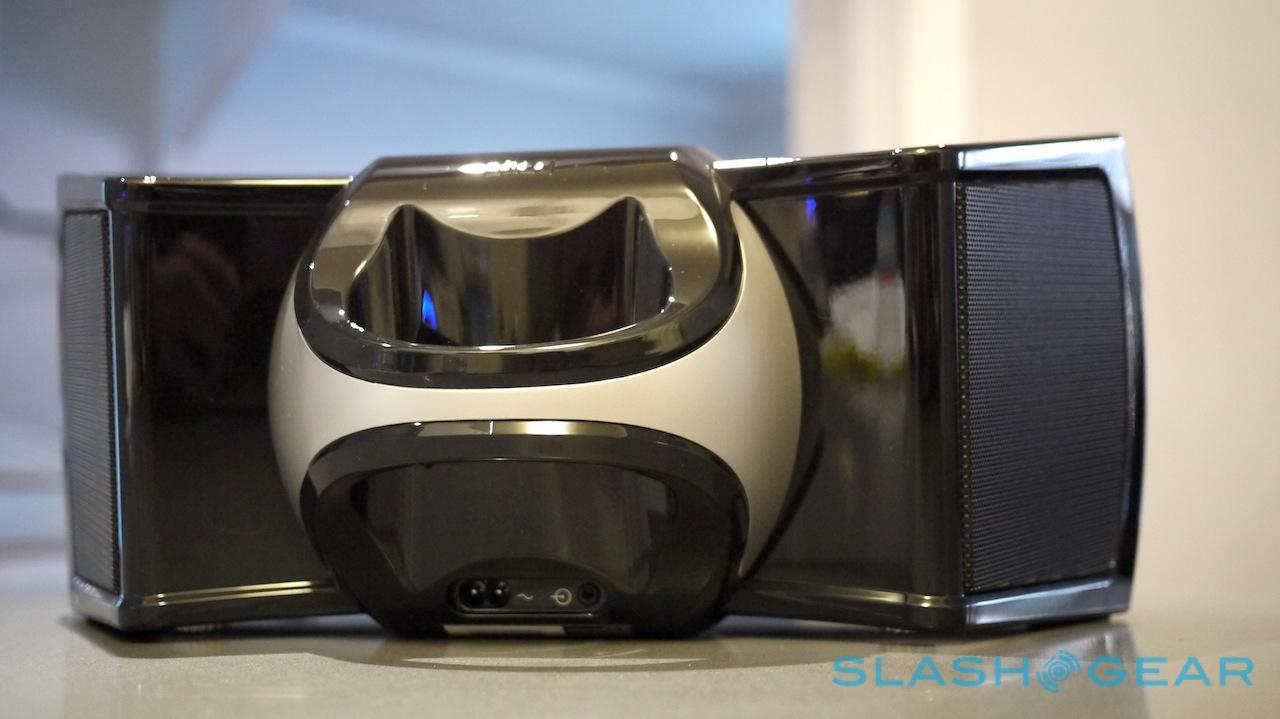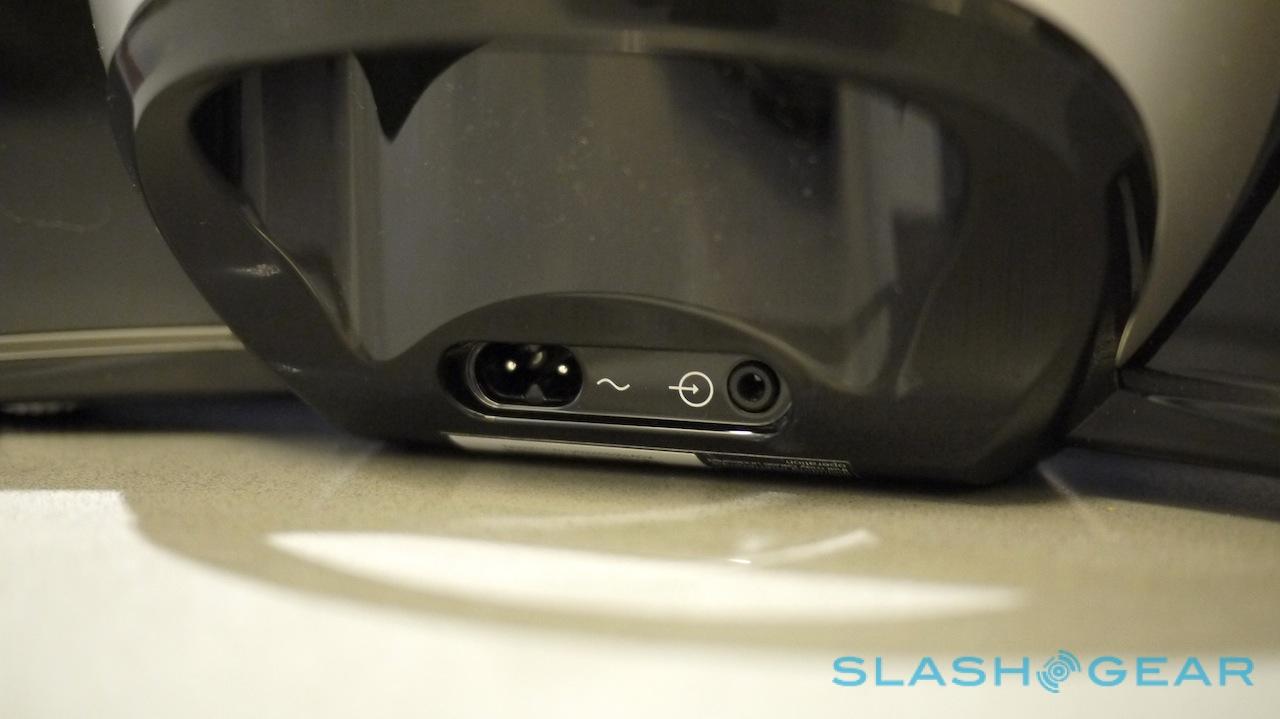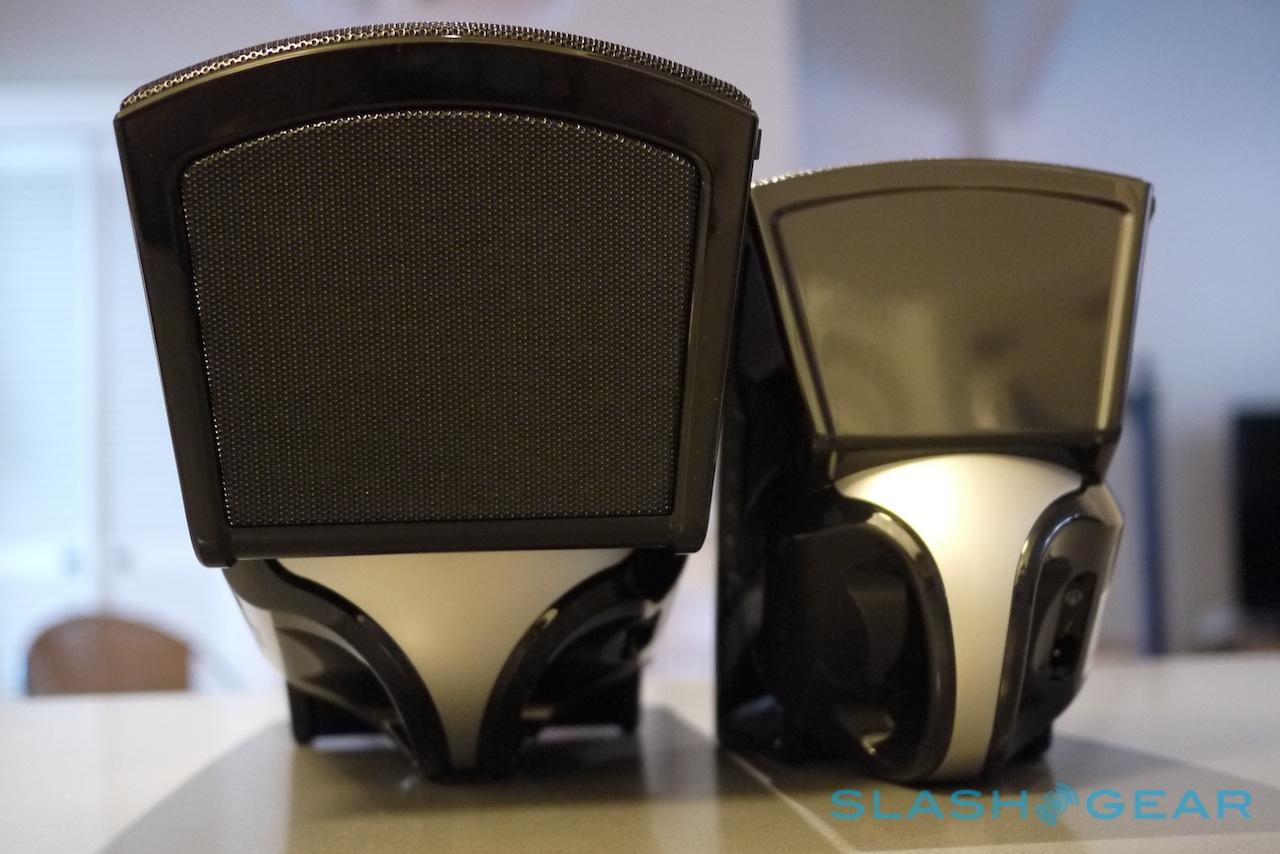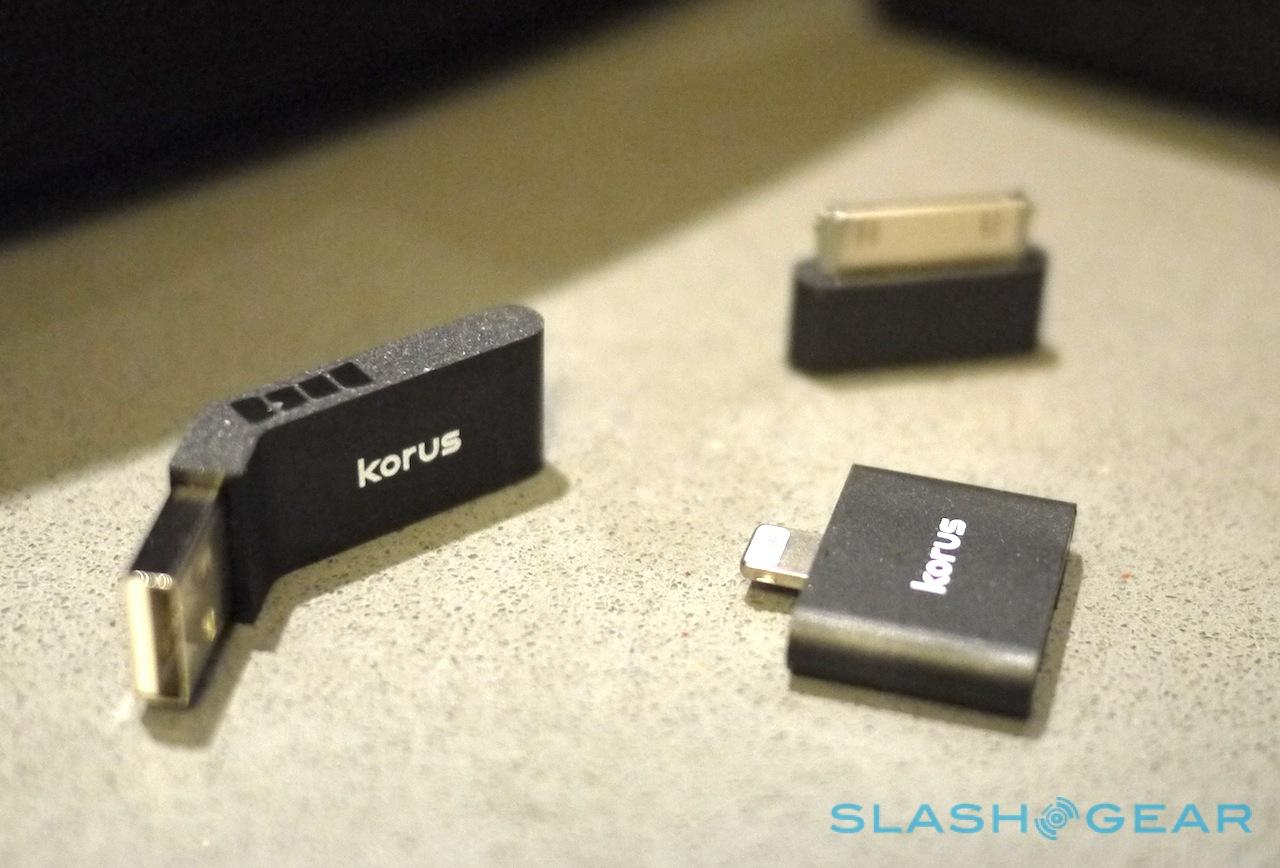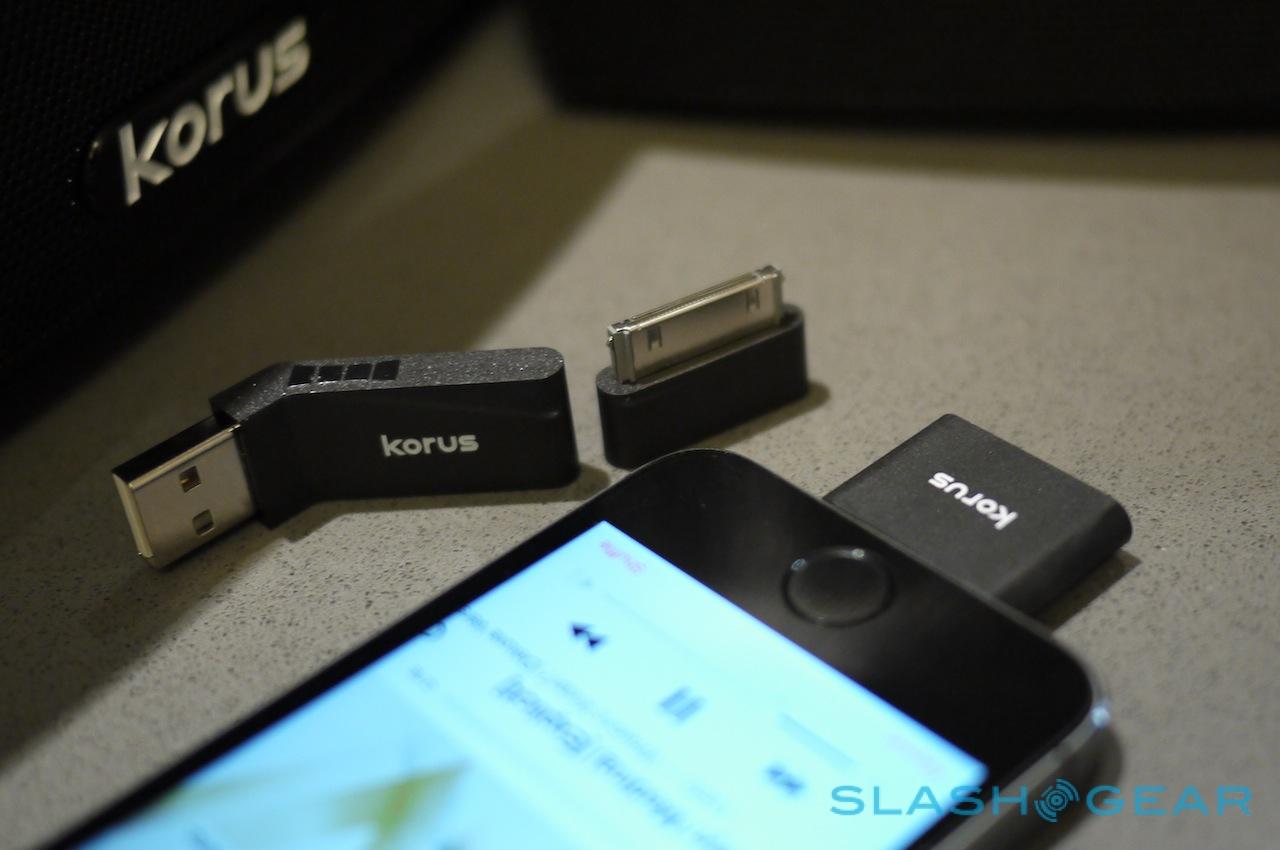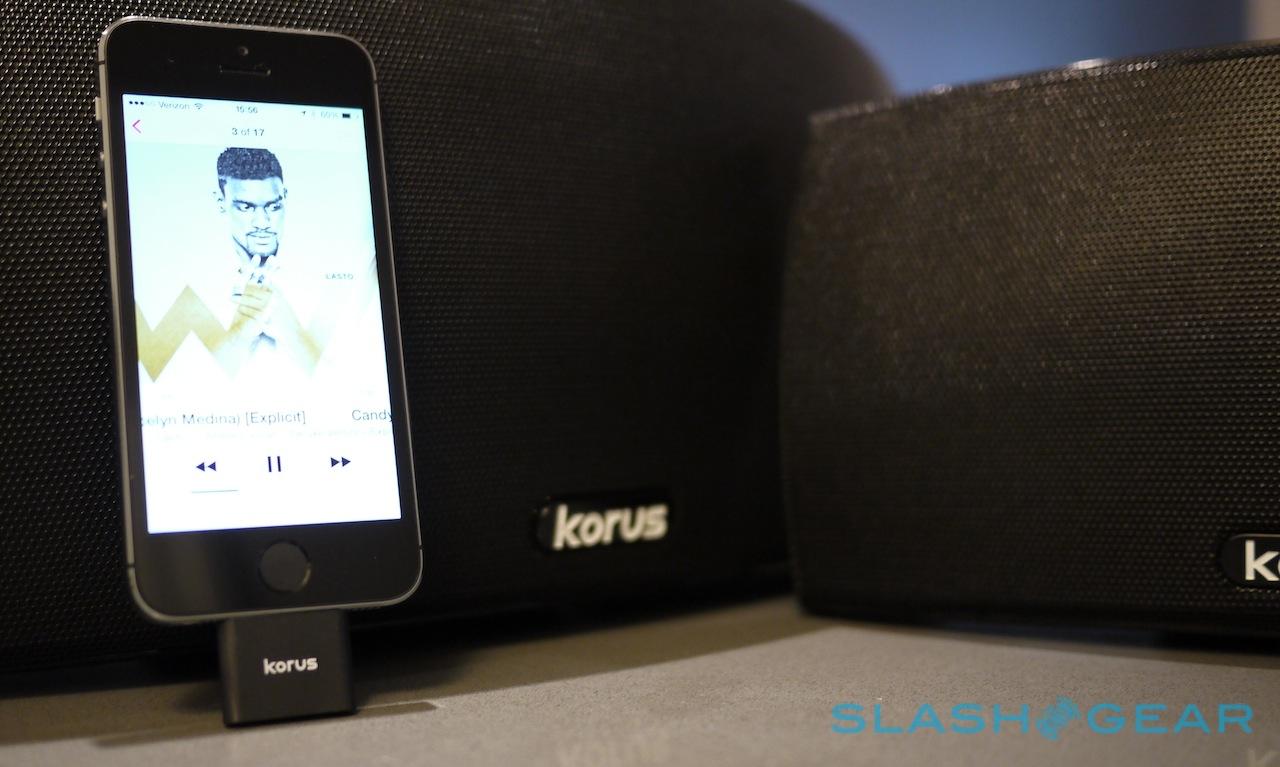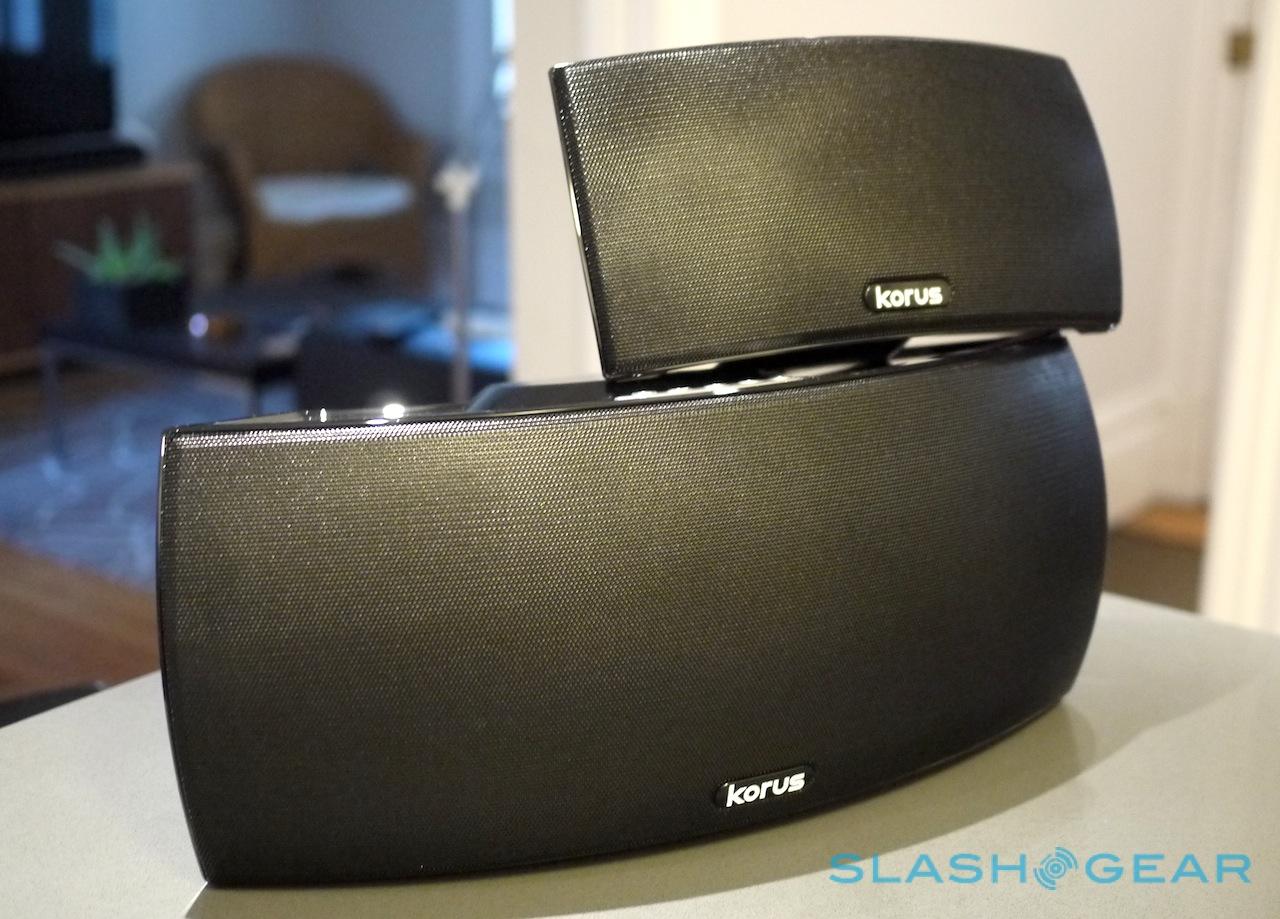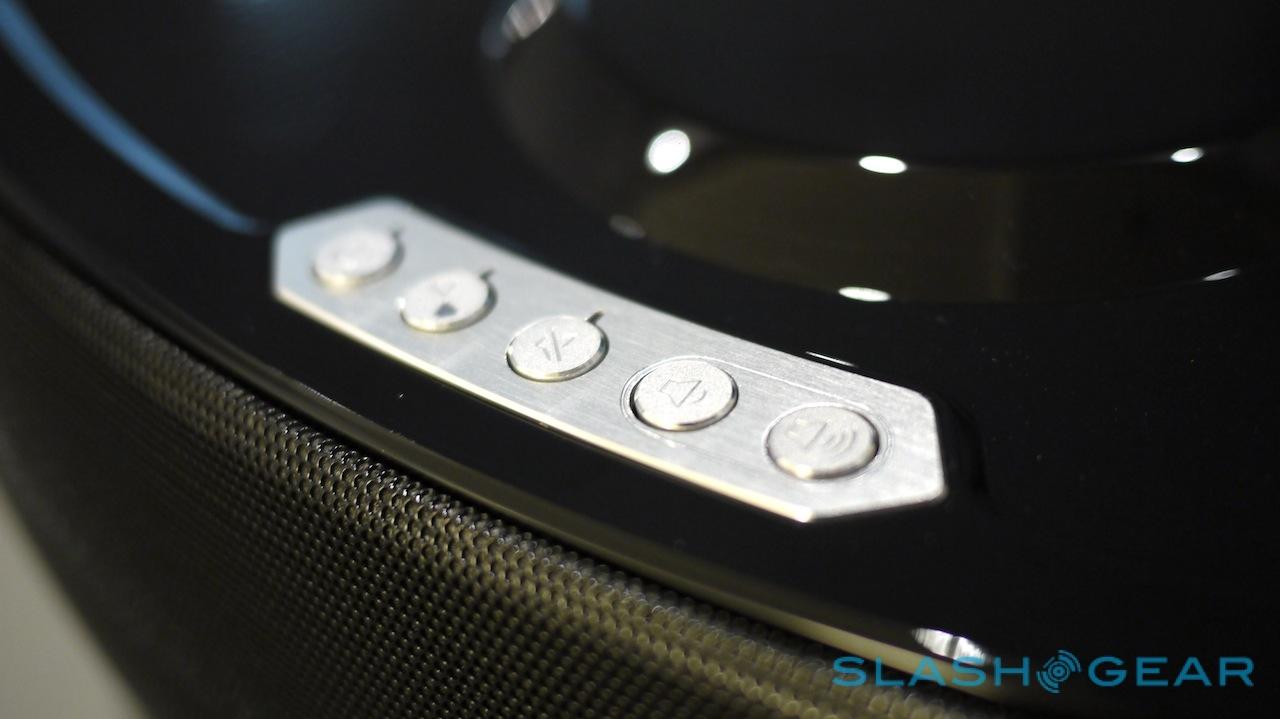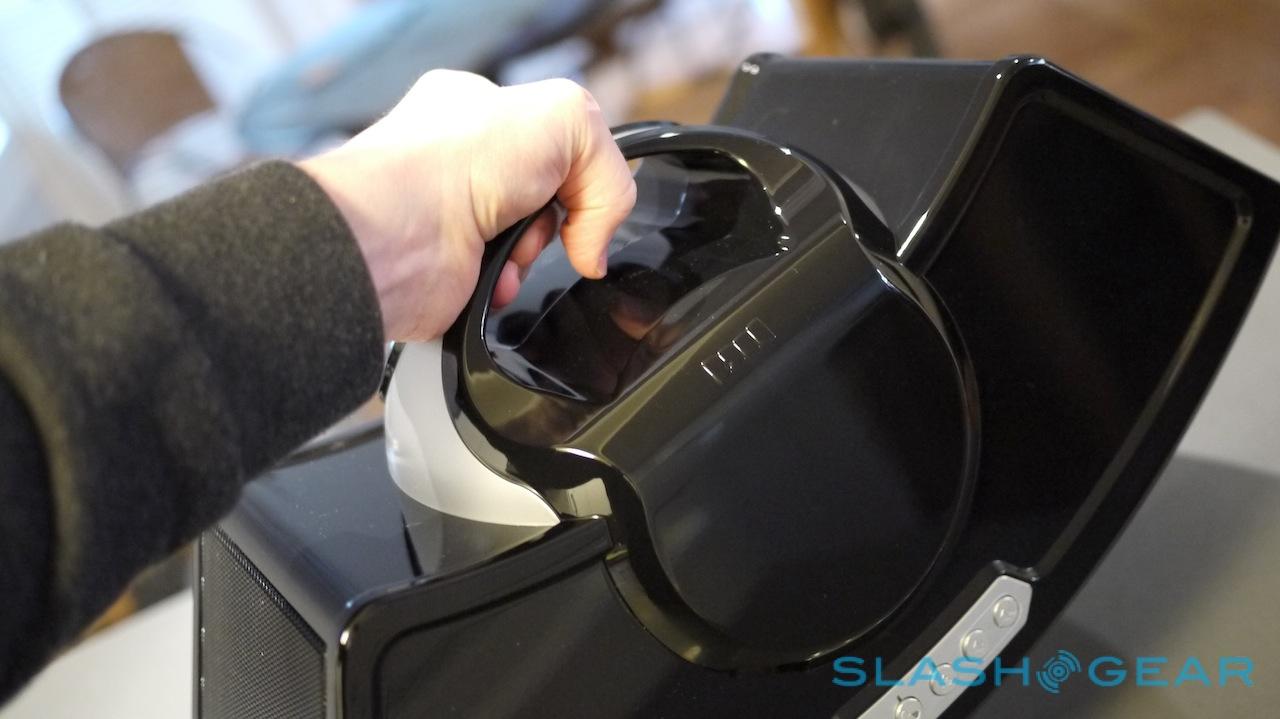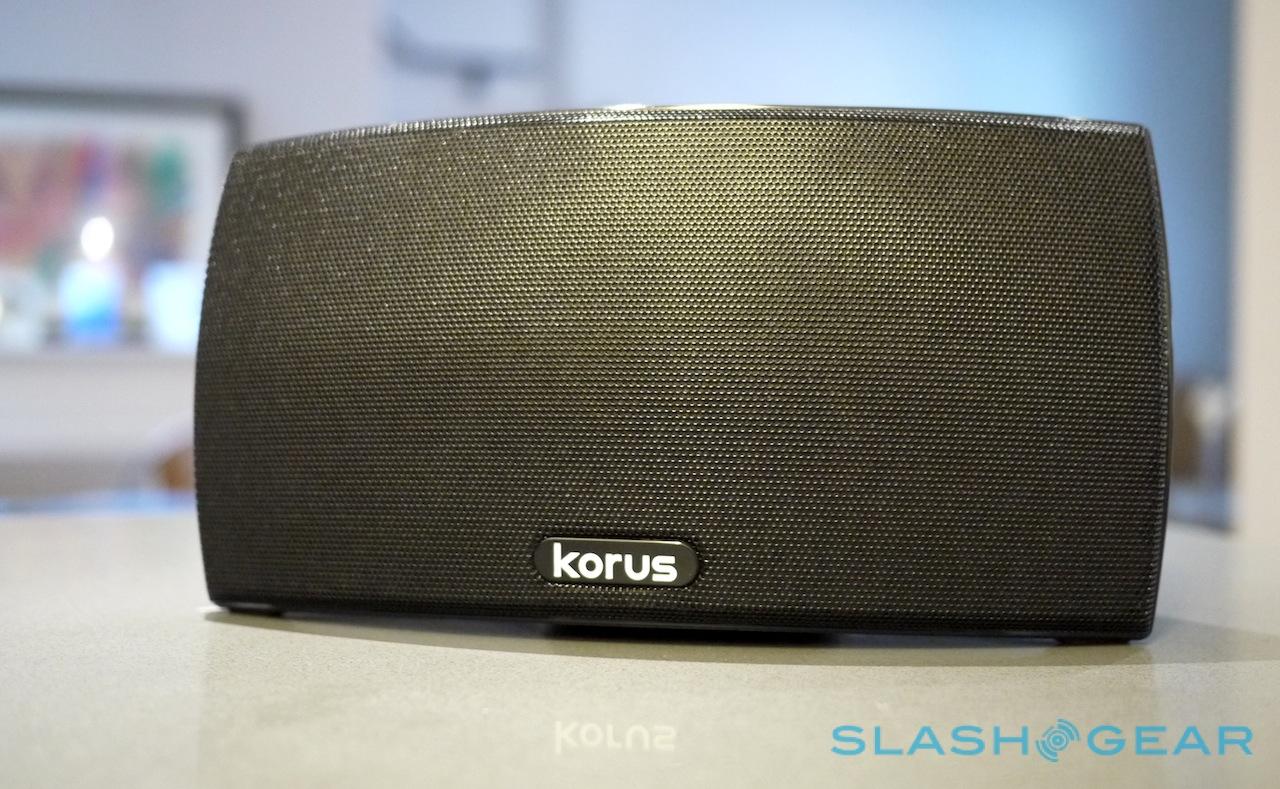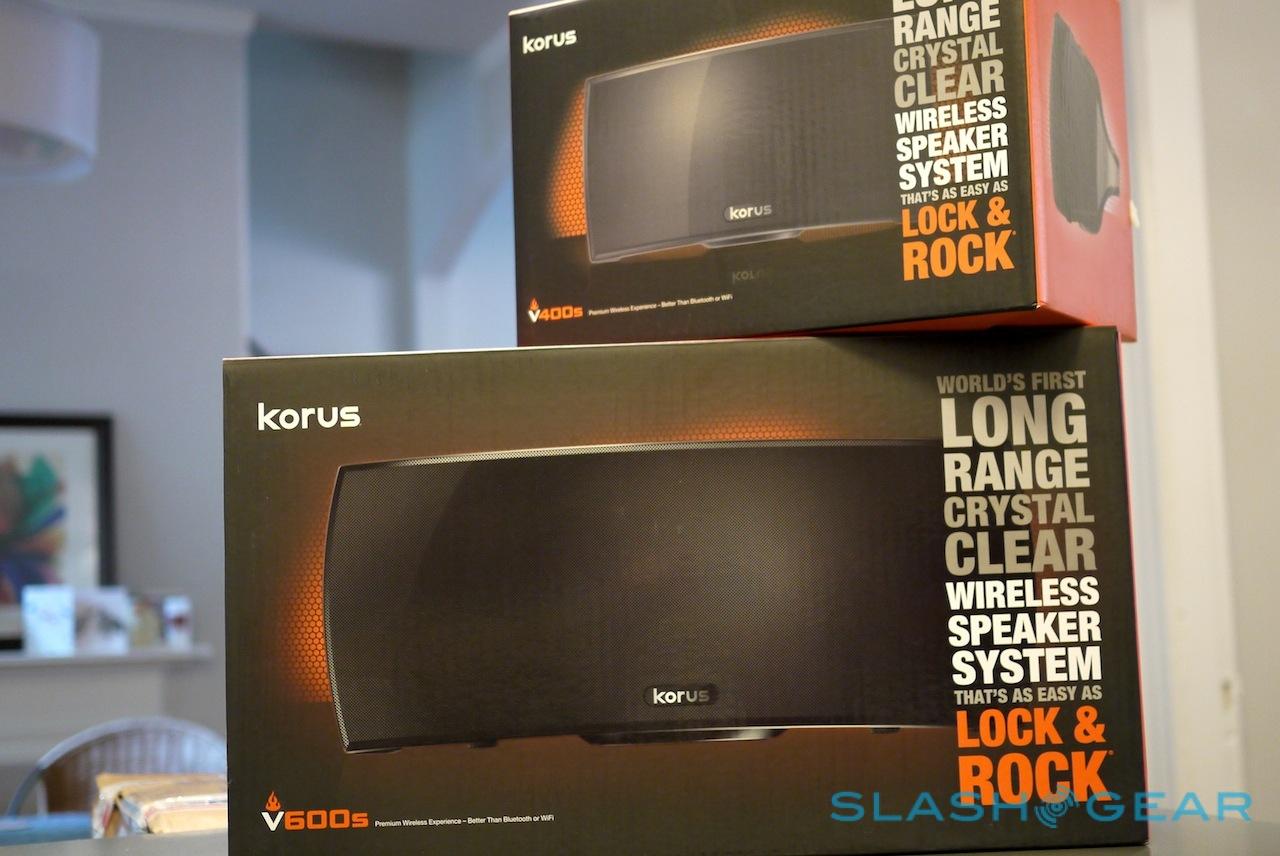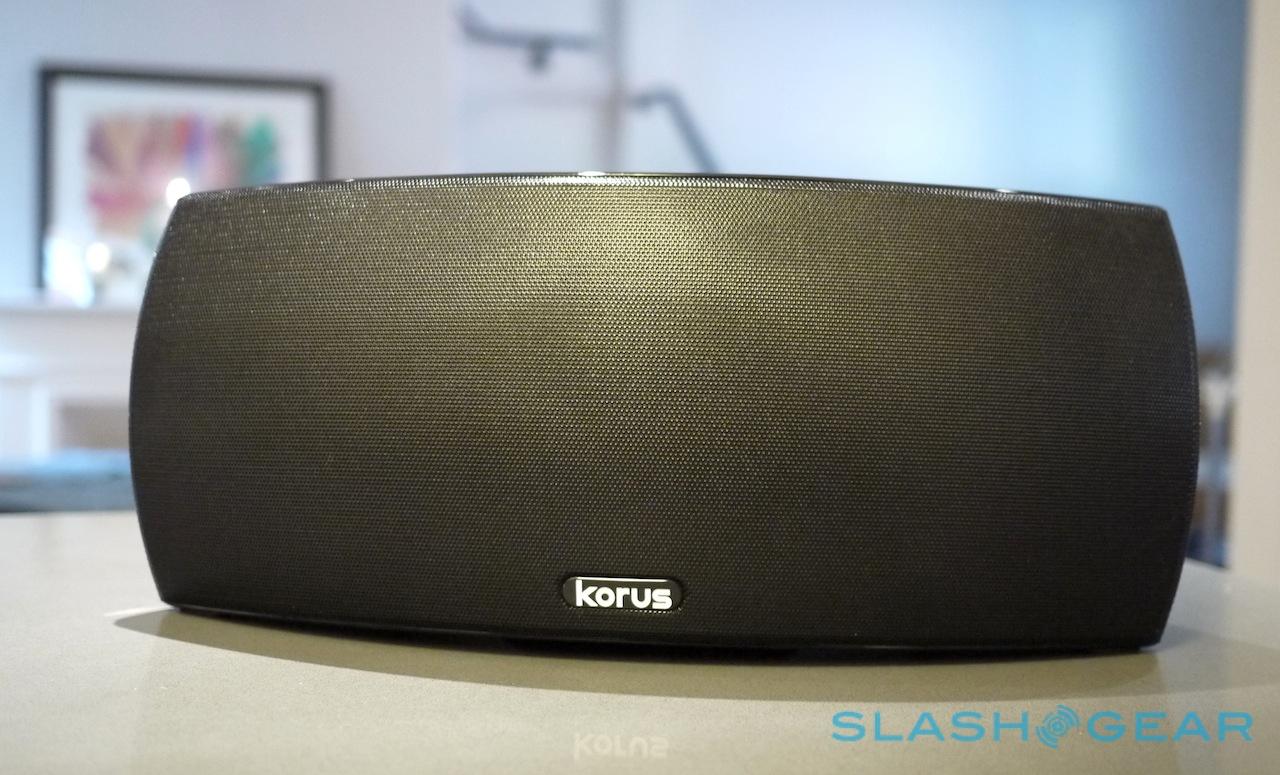Korus V600 And V400 Wireless Speakers Review
Korus thinks the audio market needs a new music streaming system. That's an ambitious goal: if you've been in the market for wireless audio recently, you'll undoubtedly have seen a fair few existing options, from Bluetooth (with or without aptX), WiFi, and proprietary options like Apple's AirPlay and Sonos' well-esteemed whole home systems. Korus' two new portable speakers, the V600 and V400, don't use any of them, in fact, but is that a brave decision that pays off in performance, or simply too ambitious a challenge for one start-up to bite off? Read on for the SlashGear review.
Hardware and Design
Aesthetically, the V600 and V400 are striking, dominated by a curved grille on the front. Both have a curved design with an integrated carry-handle on the back, just above the AC input and a 3.5mm aux-in. Controls consist of an array of six silver buttons along the top edge, and the speaker as a whole is finished in glossy black plastic.
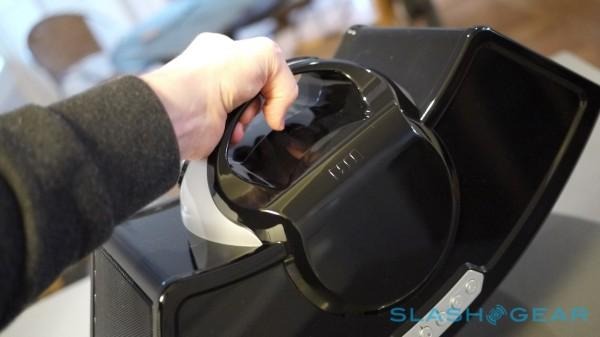
They feel solid, certainly – at 11lbs the larger V600 ($399) is actually heavy enough that toting it around the home is something we started to avoid, especially when you add in the six D cell batteries it supports for a claimed 90hrs of portable use, something the still-heavy 4.4lb V400 ($299) doesn't get – but the shiny plastics instantly pick up fingerprints and don't' look quite as "premium" as the matte finish on, say, a Sonos.
Korus' conceit is eschewing Bluetooth and WiFi streaming, or even Apple's own AirPlay, in favor of its own proprietary SKAA streaming system. The advantage is convenience and immediacy, Korus says: no lag, as there can be with Bluetooth, and setup is simple between up to four speakers.
On the downside, it means that support isn't built into your iPhone or iPad. Instead, Korus offers plug-in dongles, which it calls Batons: there are Lightning and 30-pin Dock Connector options for mobile devices, along with a USB version for your laptop or desktop. There's no version for an Android or other device, yet, however, though Korus says one is due to arrive in 2014.
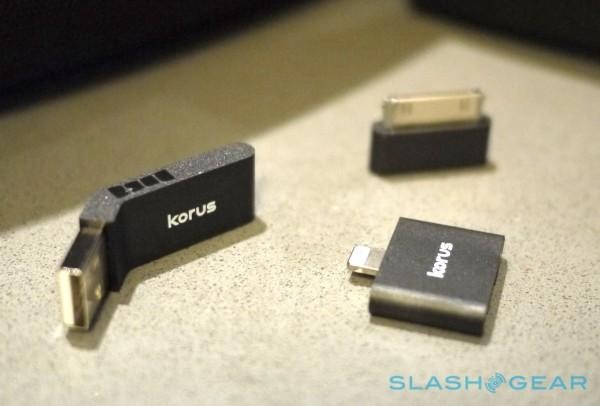
Happily it's a case of plug-and-play: slot in the Baton and whatever audio output is coming from your device is streamed to the speaker instead. That doesn't just mean your music app of choice, either: system sounds, like IM chimes and new email pings; YouTube audio; iMovie soundtracks; in short anything that you might hear from your phone, tablet, or computer, will come out of the Korus speaker.
Up to four can be connected at any one time, either collectively as a group; Korus suggests either filling one large space with multiple speakers, or setting up a multi-room system with different content going from each dongle to each device. A Baton is $49.99 each, though Korus will offer all three for $49.99 if you buy the V400 or V600 starter-bundle.
Performance
The V600 and V400 certainly deliver on ease of setup: within moments of plugging in the Batons, audio was streaming from our test iPhone and iPad to the speakers. Korus offers an iOS app to control individual volumes of each speaker, but it's not necessary for the most part; it's worth noting that the app can't control what's, as per the Sonos app for instance.
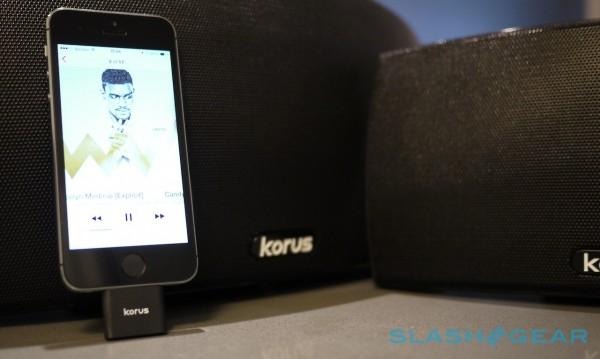
Korus claims up to 65 feet of internal range from Baton to speaker, and up to 200 feet outdoors with nothing in-between. In practice, we found those to be reasonable estimates, with both managing roughly 55ft through several solid walls; when you get out of range, the stream simply cuts out. Korus offers a $19.99 charging cable which slots around the iOS device Batons and allows you to recharge them while still leaving the dongle attached.
Of course, all that would be for naught if the sound quality wasn't up to scratch, but happily both speakers perform well there. That's in part because Korus is starting out with a decent connection between iPhone and speaker: SKAA isn't lossless but it does offer 480kbps support and 40ms latency, which is more than sufficient for the sort of compressed content on most peoples' devices.
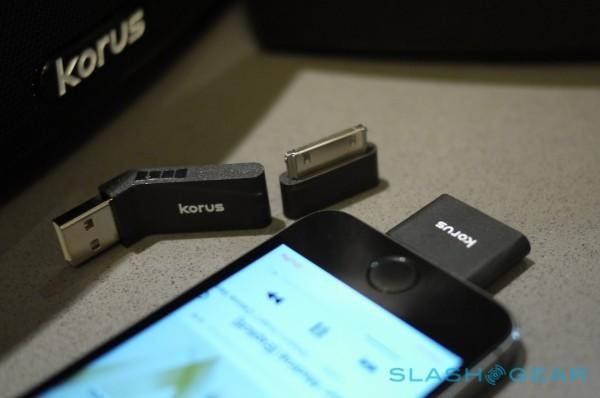
Then there's the quality of the speakers themselves. The larger V600 is unsurprisingly more powerful, with side-firing tweeters for a broader sound-stage, and an 80Hz – 20kHz frequency range. It's definitely loud – uncomfortably so at the top of the volume range – and has more than ample bass, capable of filing a room in a way that belies the single-point origin of the sound. Trebles also have a pleasing amount of sparkle, while the mids are solid. We were particularly impressed by how well the V600 does providing audio to media playback on an iPad, where the absence of lag meant no issues with lip-sync.
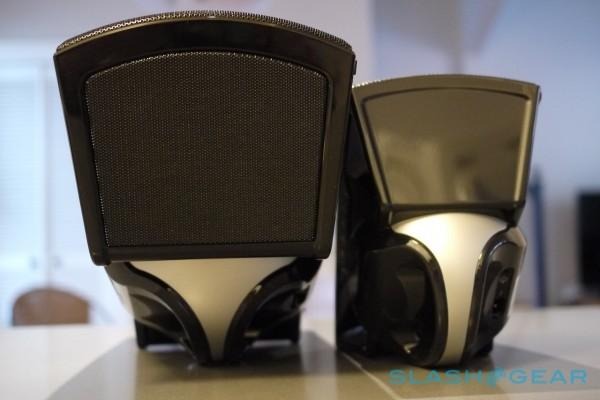
The V400 is similar, though obviously less powerful. We're most pleased by the evenness of the frequency range – Korus says 125Hz – 20kHz – which doesn't have noticeable jolts in trebles, mids, or bass. It doesn't have quite the almighty thump as the V600 does, either at the bottom end or in terms of overall volume, but it's more than sufficient to fill a bedroom or study.
Wrap-Up
There's plenty to like about the Korus system. The convenience bests Bluetooth easily, and the audio quality is top-notch; being able to rapidly flip from source to source and even move the speakers around – with the V600 still playing, no less, great for garden use though since it's not waterproof you shouldn't use it too close to the pool – is simple enough anyone to do.
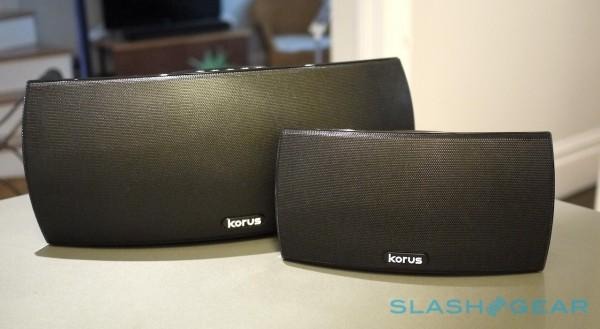
That said, we have a few lingering issues. Yes, the use of proprietary dongles makes setup easy, but you're also paying $50 apiece, and that gets a little galling when you consider your iPhone, iPad, and most laptops already have Bluetooth built in. Meanwhile, though Sonos' app may add an extra level of complexity, it also gives you far more control over what's playing a where: in contrast, you'll have to hunt down the source device if you want to change what a Korus speaker is playing.
For multi-room audio, then, Sonos remains our pick. However, the V600 and V400 speakers are certainly impressive in their own right, particularly as an alternative to iPhone and iPad speaker docks or desktop speakers for your laptop: for a start, the sound quality puts most to shame, and flicking between all three is straightforward. That, and its portability, makes Korus' system a solid pick for the household that's iOS committed, with the promise of Android joining the party sometime next year.

